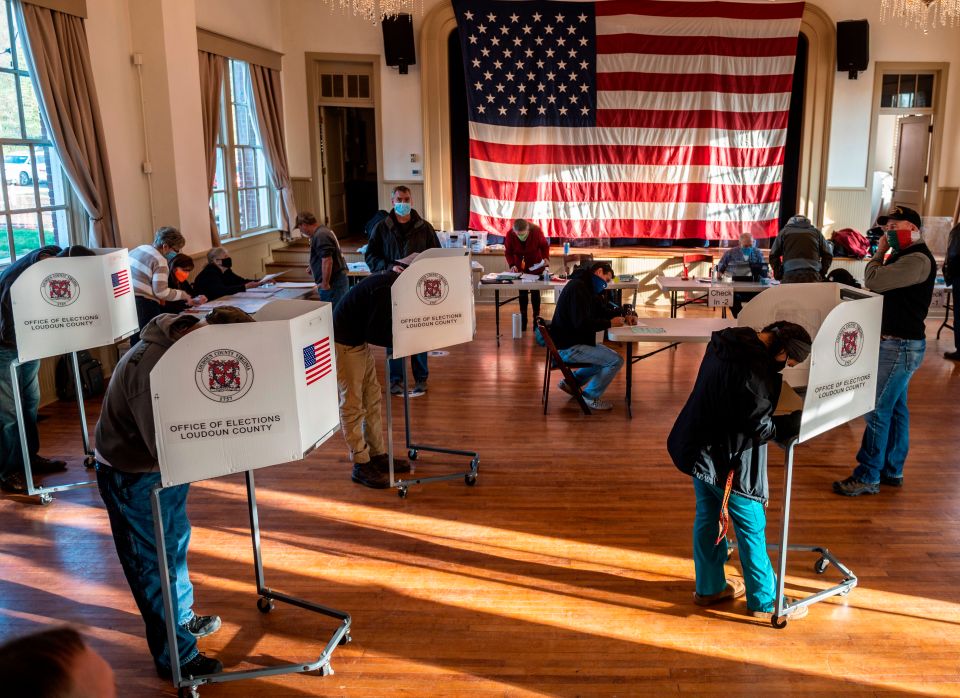OpenSecrets calculated that the cost of the intermediate elections, which will be held on November 8, will exceed 9.3 billion dollars.
“There are two important things in politics. The first is money and I don’t remember the second.” The phrase, attributed to Republican Senator Mark Hanna in 1895, is still valid in 2022, a year in which the financing of US legislative campaigns is expected to reach unprecedented heights.
The OpenSecrets organization, which tracks the money used in politics and its impact on elections, estimates that the cost of these mid-term elections, which will be held on November 8, will exceed 9.3 billion dollars.
Of that amount, according to his estimate, 4.8 billion have already been spent, 55.83% by Republicans, currently in opposition, and 42.6% by Democrats.
The Joe Biden Administration risks its control of Congress when the 435 seats in the House of Representatives and just over a third of those in the Senate are renewed in November, and the possibility that both chambers change their political color, from Democratic blue to Republican red, has driven up the cost.
“It’s a recession-proof sector,” jokes Michael Toner, a lawyer and former president of the Federal Election Commission (2002-2007), who points out to EFE that these records are broken in each cycle. In the 2018 legislative elections, 7,100 million were spent.
The polarization of the country, the tight margin expected in the polls and the January 2021 ruling of the Supreme Court, which revoked a ruling that for two decades had set limits on the ability of companies and unions to finance party campaigns in elections federal, explain the increase.
And, also, that it is currently “much more expensive to communicate on a large scale”, adds the expert.
With less than three weeks to go before the legislative elections, the weighted average of FiveThirtyEight polls gives the Democrats a 55% chance of maintaining control of the Senate and only a 19% chance of doing so in the House of Representatives.
At this point in 2018, candidates for the House of Representatives had spent 30% less than now, and half those who aspire to the Senate. The largest individual contributor has been the investor and philanthropist George Soros, who has contributed $128.4 million to the Democrats.
Special mention should be made of the so-called Super Political Action Committees (Super PACs), which emerged in 2010. Support groups that can raise and spend unlimited amounts but are prohibited from donating that money directly to an applicant and coordinating with him.
As of this week, according to OpenSecrets, 2,394 Super PACs reported having brought in just over $2 billion and having already spent half that. An amount that is equivalent to approximately 20% of the total estimated cost, giving them a prominent role.
“Often they are managed by someone close to the candidate, someone from his former staff, for example. And in some cases they are founded by a relative. The rich father of a candidate cannot donate a million directly to him, but he can give it to a Super PAC that benefits his son, ”Andrew Mayersohn, an OpenSecrets researcher, tells EFE.
The independence of these entities from their beneficiary is therefore relative, he adds. “That word means something different to a lawyer or an investor than it does to any ordinary citizen wondering who is behind the ads he sees on television.”
They are groups like the Senate Leadership Fund, the one that has raised the most money, with almost 225 million in favor of the Republicans. Or like the Congressional Leadership Fund, which follows on the list with 220 million, and the Senate Majority PAC (164), in favor of the progressives in the latter case.
“They have definitely helped drive this unprecedented level of spending. And they don’t contribute to a positive campaign environment, as they tend to advertise more aggressively than candidates because they don’t have to worry about tarnishing their image in the same way a candidate would,” Mayershohn says.
Each PAC defends its own interests and there is no shortage of familiar faces behind their backs. Actress and activist Jane Fonda has founded the Jane Fonda Climate PAC with the explicit goal of “doing what it takes to defeat the fossil fuel supporters.”
Behind the financing of many candidates there are also important organizations such as Planned Parenthood, which has opened a fund to support candidates who defend federal legislation that once again protects the right to abortion after the Supreme Court’s ruling against it.
Behind the financing of many candidates there are also important organizations such as Planned Parenthood, which has opened a fund to support candidates who defend federal legislation that once again protects the right to abortion after the Supreme Court’s ruling against it.
But more regulation does not seem to be on the order of the day. Republican senators, for example, in September blocked a bill that would have required those committees and other organizations to reveal the identity of donors who give them $10,000 or more during election season.
“This is a bit like the Wild West,” emphasizes the former president of the Federal Election Commission, who considers, however, that there are already “enough regulations” despite the particularities of the country, which mean that, for example, the duration of the campaign does not is delimited and is practically “a marathon”.

